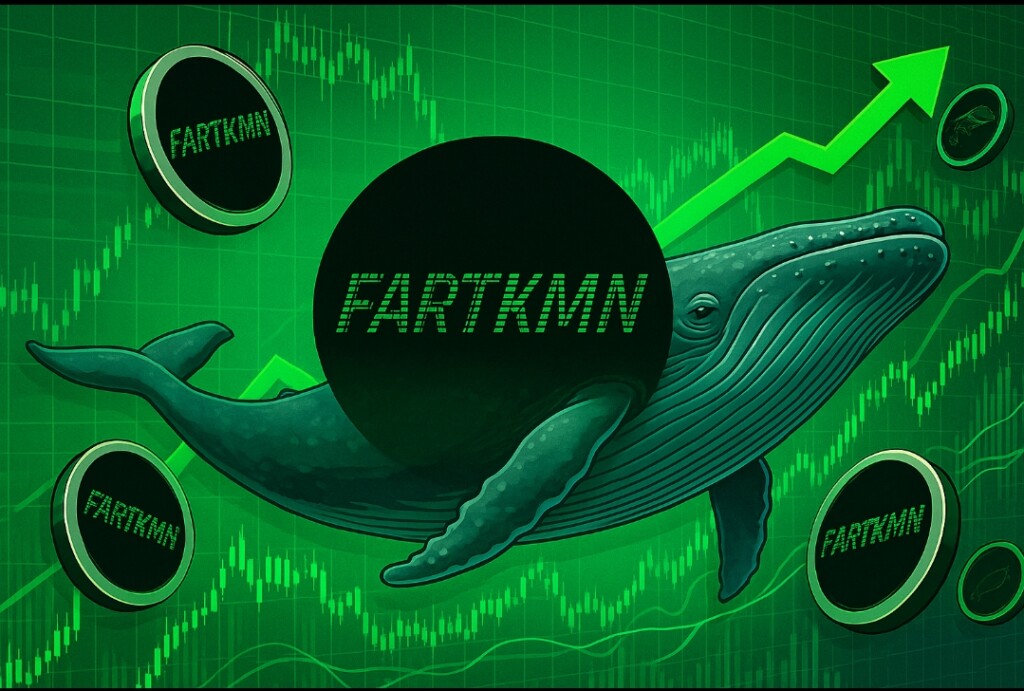The memecoin market remains one of the most unpredictable in the crypto space, and $FARTCOIN is at the center of attention.
On-chain analytics platform Stalkchain says $FARTCOIN (@FartCoinOfSOL) was the most bought token by smart money wallets in the past 24 hours, indicating a surprising, if mysterious, comeback for the meme coin. But a look at the broader on-chain behavior shows a complex picture that’s hard to interpret—one that highlights a real divergence in the strategies of investor classes.
#FARTCOIN @FartCoinOfSOL is the most bought token by smart money in the last 24 hours pic.twitter.com/1ClWki4fRa
— Stalkchain (@StalkHQ) May 8, 2025
Smart Money Trims Holdings as Top Holders Accumulate
In the last month, wallets known as “smart money”—usually wallets with a good history of profitable trades—have reduced their $FARTCOIN positions by 37.6%. This level of selling typically signals a lack of conviction or the realization of profits after a bullish run. These addresses tend to be quicker to move in and out of positions, often timing their trades with market momentum and sentiment.
What are $FARTCOIN holders up to?
While Smart Money has shaved off 37.6% of its bags over the past month.
Meanwhile, the Top 100 holders are hitting the gas: Up 15.9% to 479.8M FARTCOIN.
Exchanges? A slow accumulation at +2.9%.
This divergence in behavior tells a story: the… pic.twitter.com/PWmyJ1diMt
— Nansen 🧭 (@nansen_ai) May 9, 2025
By contrast, the Top 100 $FARTCOIN holder’s behavior depicts a vastly different picture. These large wallets, which hold a substantial percentage of the total supply of the token, have boosted their holdings by 15.9%, now possessing 479.8 million $FARTCOIN. This uptrend in accumulation could suggest an increase in long-term confidence regarding the token’s price for major holders, who seem to be preparing for something in the future, given the prior volatility in $FARTCOIN prices.
This divergence is not unexpected in the highly speculative token ecosystems, particularly memecoins, where sentiment and positioning are often at loggerheads. In fact, we might even view this conflict as something positive—an indicator that, despite all appearances, the memecoin under discussion has some genuine (if very limited) market potential.
Exchanges Show Modest Accumulation Trend
The accumulation pattern is modest but encourages many. In 30 days, exchange wallet balances of $FARTCOIN are up by 2.9%. I see this as progress. It tells me that the centralized trading platforms are not only keeping $FARTCOIN but also see it as something worth adding to their inventory. This nuance is important because the marketplace, on the whole, is directionless and uninviting to the kinds of moves that produce actual price action.
The bolstering of exchange balances could signal that retail interest is not only intact but might also be slowly building. It could also serve as a preamble to a more significant uptick in trading volume—newly deposited tokens tend to lead to more active exchanges. Of course, if these deposits serve as a prelude to some orderly offloading of new tokens, then we might need to suspect that the destination to which these tokens are bound is the same. In the absence of the signing mechanism and the BIT—which together should allow us to identify the intended recipients of this token offloading—keeping an eye on exchange inflows and balances will probably be our best and only way of inferring whether this week’s uptick is a prelude to distribution or further retail accumulation.
Reading the Signals: Contradictory Moves Reflect Market Uncertainty
$FARTCOIN’s situation is interesting because it behaves very differently for various classes of investors. While the very smartest of investors are taking a really hard look at their FARTCOIN positions and trimming their exposure, the very top holders of FARTCOIN are not only maintaining but, in many cases, inflating their positions.
For retail or newer investors trying to decode these signals, it can be quite tough to determine which side to follow. One group of investors, often referred to as smart money, exits before a pullback. Another group, deemed top holders, accumulates en route to a longer-term rally. This is the dilemma that a retail or newer investor faces but with some added difficulties. Particularly in the case of memecoins, which rely a lot on medal fanfare and precious little substance, the sentiment can shift wildly and dramatically. And this happens with dubious regularity.
One possible interpretation is that sophisticated investors, known for short-term strategies, have already done their buying and are now moving on. Meanwhile, the top 100 holders of this cryptocurrency appear to be positioning themselves for the next round of speculative fun. If these behaviors can be interpreted this way, it suggests that the cryptocurrency may be consolidating in a bear market, where the exit of weak hands enables stronger holders to prepare for the next major move.
Memecoins are known for their unpredictable characteristics. Although the fundamentals often play second fiddle to social sentiment, trading dynamics of this sort—where big holders accumulate while others divest—usually precede volatility. For $FARTCOIN, the next few weeks may well determine whether the token can regain some kind of upward slant or sink under the weight of diminishing smart money interest.
Meanwhile, everyone’s gaze will be fixed on the flows of the token, the balances of exchanges, and any social catalysts that might hype the memecoin cycle again. Some major holders—along with a few others—seem to be cashing out. Nevertheless, the next chapter of $FARTCOIN seems to be one poised to be worth watching.
Disclosure: This is not trading or investment advice. Always do your research before buying any cryptocurrency or investing in any services.


No Comments